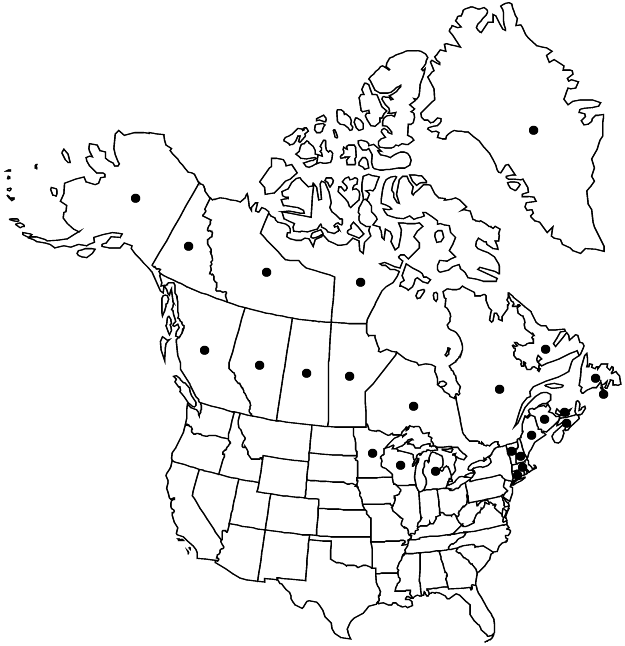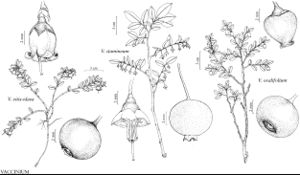Difference between revisions of "Vaccinium vitis-idaea"
Sp. Pl. 1: 351. 1753,.
FNA>Volume Importer |
FNA>Volume Importer |
||
| Line 53: | Line 53: | ||
|publication year= | |publication year= | ||
|special status= | |special status= | ||
| − | |source xml=https://jpend@bitbucket.org/aafc-mbb/fna-data-curation.git/src/ | + | |source xml=https://jpend@bitbucket.org/aafc-mbb/fna-data-curation.git/src/f6b125a955440c0872999024f038d74684f65921/coarse_grained_fna_xml/V8/V8_1013.xml |
|subfamily=Ericaceae subfam. Vaccinioideae | |subfamily=Ericaceae subfam. Vaccinioideae | ||
|genus=Vaccinium | |genus=Vaccinium | ||
Revision as of 20:27, 24 September 2019
Plants densely colonial, frequently mat-forming; twigs of previous year green, terete, puberulent, not verrucose. Leaf blades pale and glandular abaxially, bright green adaxially, elliptic to obovate, 5–18 × 3–9 mm, glaucous-coriaceous, margins entire, slightly revolute. Pedicels 4–6 mm. Flowers: corolla pinkish white, 3–5 mm; filaments puberulent. Berries red, 8–10 mm diam. 2n = 24.
Phenology: Flowering late spring–early summer.
Habitat: Boreal taiga in jack-pine stands, muskegs, raised bogs, dry, rocky barrens, lichen woodlands, exposed habitats, heaths, high moors, headlands, tundras, cliffs, mountain summits
Elevation: 0-1800 m
Distribution

Greenland, St. Pierre and Miquelon, Alta., B.C., Man., N.B., Nfld. and Labr., N.W.T., N.S., Nunavut, Ont., P.E.I., Que., Sask., Yukon, Alaska, Conn., Maine, Mass., Mich., Minn., N.H., Vt., Wis., n Eurasia, circumboreal.
Discussion
The distribution of Vaccinium vitis-idaea in North America extends from northwestern Greenland at 77° north latitude, south to Connecticut at 42° north latitude, and from 45° west longitude (southern tip of Greenland) west to 170° west longitude (Aleutian Islands); it is rare in Connecticut (not collected since the late 1800s), Massachusetts, Vermont, and Wisconsin. This species has been erroneously reported from New York; it hybridizes with V. myrtillus in northern Europe, producing V. ×intermedium Ruthe. The hybrid might be anticipated in North America, but the two species are not known to occur together anywhere in the flora area.
Selected References
None.
